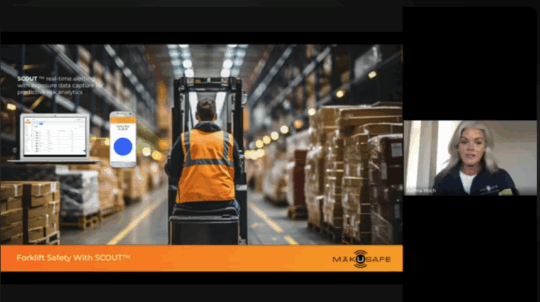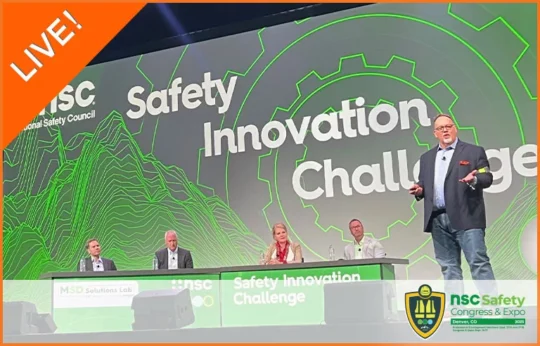The MākuSafe® Difference: Part 3 – Impact For Industrial Organizations
June 18, 2019
The MākuSafe® Difference: Part 3, For Industrial Organizations
This piece is the third installment of a five-part series highlighting the impact of MākuSafe®. Read about its benefits for workers and safety managers, and stay tuned to the blog to learn about how MākuSafe® impacts workers’ compensation and loss prevention departments, as well as other insurer core systems.
For organizations to compete and succeed in the business environment of today, their core business strategies must include attracting and retaining talent, maximizing returns on human capital, ensuring efficient processes, and managing costs.
Organizations that experience a high volume of accidents pay a hefty price. Prospective employees seek out businesses that put safety first, and those without effective safety programs often have trouble securing and keeping talented workers. Additionally, a high number of OSHA recordables means a high experience modification rating — also known as EMR or mod score — and high worker compensation premiums. By helping businesses approach safety in a proactive manner and reduce the overall number of safety incidents, MākuSafe® supports strong strategies.
Why industrial organizations will appreciate MākuSafe®
One of the key reasons why MākuSafe® is valuable for businesses is that is enables them to be competitive when building a strong workforce. People are more valuable than ever before — and with unemployment rates lower than they’ve been in years, good people are hard to find, and even harder to keep. Having the MākuSafe® system in place is a clear indication for both potential and current employees that the company is making worker safety a priority.
MākuSafe® is also helpful in ensuring a smooth transition to more connected factory systems. As businesses go through digital and automation transformations, they end up with massive amounts of data in the cloud — and it can be overwhelming. Through API, MākuSafe® enables users to pull all of the relevant data from multiple data sources — people, facilities management, and equipment — into a single platform with a single login, where it’s easy to identify broader trends and paint a powerful and robust picture for safety leaders.
In terms of insurance, the MākuSafe® data enables businesses to become more informed as policyholders. There is generally little opportunity to tell an insurance company what you think you should pay — and yet the information that MākuSafe® gathers allows businesses to demonstrate their effectiveness in eliminating hazards. While it’s certainly doesn’t guarantee reduced workers’ compensation insurance rates, leveraging this data means that businesses can paint their insurer a more accurate picture of what things looked like on the floor over the past year.
Of course, business is also about the bottom line. So while the MākuSafe® system offers up potential savings in terms of reduced insurance costs, lower accident-related costs (since there are fewer accidents), and greater efficiency, how much does it cost — and is that cost worth it?
Here’s the reality: for about the cost of a FitBit, organizations can issue MākuSafe® to their workers in the same way as PPE. And with the average slip and fall incident costing businesses about $46,000, gathering predictive data that can support an organization’s safety leadership in preventing even one claim allows the MākuSafe® system to more than pay for itself.
How it makes an impact
For industrial organizations, perhaps the most important impact that MākuSafe® has is the ability to enhance the overall safety culture, helping organizations move from being reactive to being proactive about the safety of their employees.
When we talk about moving towards a strong safety culture, we’re looking at changing behavioral and attitudinal norms — things that are deeply rooted and often difficult to change. To do so requires influencing people’s attitudes and perceptions on a daily basis through conversation, which demonstrates to workers that the organizational leaders care and are actively working to try to make their lives better. It’s about establishing trust and increasing employee engagement and buy-in. MākuSafe® provides an opportunity to have these conversations with workers, and statistics show that environments with positive safety cultures and engaged employees have about 70% fewer accidents.
And as we look further at employees, it’s important to note how using MākuSafe® can help improve talent attraction and retention, since workers often seek out workplaces that value and emphasize their safety. Looking ahead in this way is critical to long-term planning and ensuring your company can overcome labor shortages and remain competitive in the market. Put simply, the ability of the organization to attract and retain talent determines its future ability to exist — and having MākuSafe® helps give companies a leg up on the competition by letting workers know that their safety and well being is a top priority.
SMEs — or small and medium-sized enterprises — with a so-called ‘accidental safety director’ (like HR or administrative staff) see extensive benefits from the delivery of alerts to real-time trends and recommended action steps to mitigate risks before accidents occur. It means that even when the person in charge of safety isn’t a certified safety expert, there is no doubt about where potential hazards lie and what exactly can be done to get ahead of them. The system also enhances the organizational agility of these businesses by providing easy-to-use data that allows them to adapt, evolve, make decisions, and use employees in the most effective, efficient way.
Finally, of course, the system helps businesses reduce costs and increase efficiencies. We’ve already talked about how its predictive nature can save tens of thousands of dollars in workers’ compensation costs — but time is money, and this is another area where MākuSafe® thrives. The platform can use the data collected to pre-populate incident reports, alleviating some of the administrative burden on safety leaders, streamlining EHS compliance reporting and paperwork, and freeing up more time for safety managers to spend talking to their employees. It offers an opportunity for evidence-based decision making on process re-engineering and continuous improvement for leadership, and will eventually allow safety leaders to complete return to work program tracking and documentation within the system.
To learn more about MākuSafe® or read other articles like this, please visit our website at Makusafe.com.
About MākuSafe
MākuSafe® is an Iowa-based software as a service (SaaS), data, and analytics company working to improve employee health, safety, and productivity, while reducing workers’ compensation claims and mitigating workplace risks. Our proprietary wearable technology gathers real-time environmental and motion data from workers and delivers it to the cloud platform, which uses machine learning to identify and notify safety leaders about high-risk trends in the facility. The portal also auto-records near-miss leading indicators, proactively targets loss control resources to specific conditions and occurrences, and streamlines compliance reporting.





